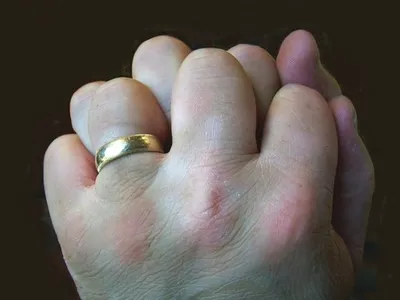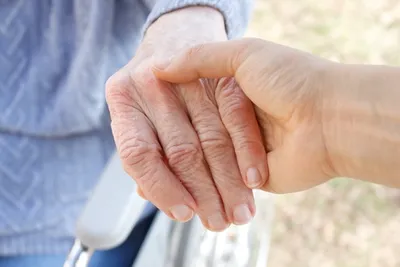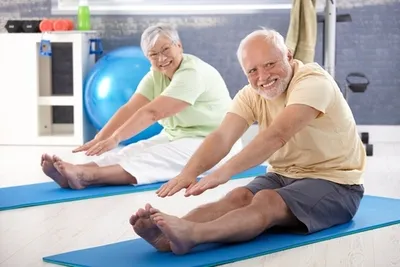Osteoarthritis is the most common form of joint disease, affecting more than 20 million Americans from the age of 25 to seniors. This degenerative disorder occurs when the smooth joint cartilage surrounding the joint breaks downs and wears away. As a result, spurs grow and jut out from the edge of the bone, and the amount of synovial fluid (or lubrication) in the joint increases, causing painfully inflamed rubbing and friction between the joint and bones.
Osteoarthritis predominantly affects the weight-bearing joints—commonly the knees, hips, cervical and lumbosacral spine, feet, and hip joints. As a result it can be painfully affect simple tasks and virtually drain your lifestyle. That’s why it’s important to be aware of the facts about the disease, in addition to these ten popular, but untrue, myths surrounding the painful condition…
1. If I’m active I can’t develop Osteoarthritis
Exercise and an active lifestyle are imperative to a healthy body and mind. However, many amateur and professional athletes are stricken with Osteoarthritis when seriously injured on the sports field. For example, an athlete who suffers a knee injury increases his or her risk of developing osteoarthritis by more than 50-percent during a lifetime.
2. If you crack your knuckles you’ll end up with Osteoarthritis
Sure, cracking your knuckles is a bad habit that may calm you down when you’re under stress. And even though it might lead to inflammation and dislocation of tendons in your hands, and reduced hand strength, it won’t lead to Osteoarthritis!
3. Wearing high heels causes Osteoarthritis
If you wore a sexy pair of stilettos to your office holiday party, don’t fear! Wearing your favorite pair of platform pumps to a special occasion every few months, or even weeks, won’t cause arthritis. However, if you don’t alleviate the pressure and wear on your knees by wearing flat shoes with support every once and a while, you could end up with osteoarthritis of the knees over the long term.
4. Osteoarthritis runs in the family
Though there is some link between of the knees and heredity—your future isn’t set in stone! Proactively lower your osteoarthritis risk if the disease runs in the family by maintaining a healthy weight, getting daily physical activity, and avoiding high-impact exercise, like running on hard surfaces and jumping, which can lead to a knee injury.
5. Cold, damp weather causes Osteoarthritis
Even though a long-term stretch in a cold, damp environment won’t cause arthritis—it will aggravate osteoarthritis pain in those afflicted with the condition. This is because when the barometric pressure drops and cold weather sets in, it causes muscles and joints to tense and can simulate an arthritis flare-up.
6. Diet Doesn’t Affect Joints
“Any pound you gain is four pounds across your knees,” White says. Being overweight increases the chances that you will develop osteoarthritis and increases the rate at which the condition, if you do develop it, will progress, so it’s doubly imperative to follow a healthy diet and maintain a healthy weight. Two in three people who are obese will develop osteoarthritis in their lifetime.
7. Repetitive jobs cause Osteoarthritis
Osteoarthritis is often linked to jobs with repetitive functions—such as assembly lines, computer jobs, and construction jobs. And even though these jobs may put you at higher risk of arthritis, you can take the proactive steps to keep your joints healthy. For instance, if you’re seated for long periods of time, get up to walk around and stretch frequently. Also, take precautions when lifting and bending to pick up objects. Sudden movements and improper lifting techniques can lead to an injury.
8. If I suffer from joint pain, I can’t be active
Bullocks! Everyone can get some exercise, those with osteoarthritis included. And low-impact exercises such as walking, swimming, and yoga can lessen the pain and prevent arthritis from worsening. Just be sure to consult with your physician before beginning a new exercise program to ensure its safe. Check out these exercises to help manage osteoarthritis
9. Everyone gets arthritis when they get old
Not so, says the National Institute of Arthritis and Musculoskeletal Skin Diseases. In fact, only 20-percent of Americans over the age of 65 years are at risk for osteoarthritis. And even if you are at risk, maintaining a healthy weight, eating right, and staying active will greatly reduce your chances of ever getting the disease.
10. Doctors can’t do anything for my joint pain
Many osteoarthritis patients believe that there’s nothing that can be done to manage their pain and discomfort. However, surgery is not the only option. Your doctor can help you manage the disease, decrease pain, and increase joint function with a healthy combination of exercise, weight loss, prescription medications, and pain and alternative therapies.













